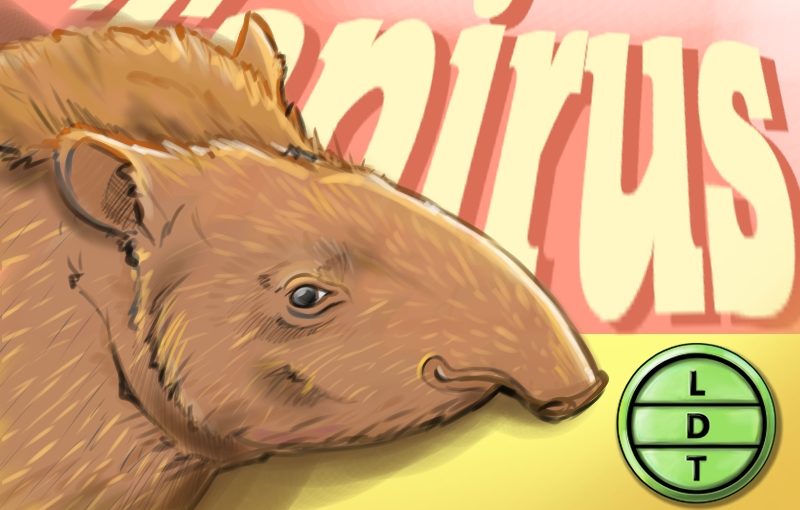“Today we are talking about a river horse whose looks are laughable and unphotographable. Yet they’re my favorite work of art.”
The Amazon Rainforest is home to a diverse population of plants and animals. But if you were hiking along the water in the brazil’s Amazon river basin, you might see something you’ve never seen before: A mammal that appears to be a portly porcine, peeking its head out of the water, or napping beside the river bank. This endearing chubster is an anatomical oddity and it may be difficult to categorize them based on looks alone. But sometimes adaptation requires and offbeat style if it means surviving in Life, Death, and Taxonomy.
Measure Up
Length – 1.8 to 2.5 m (5.9 to 8.2 ft) – 8.2 feet – How many tapirs go into the Solimões–Amazonas waterway, a major route for Brazilian industrial transport? Hint: The place where the Rio Solimões meets the Rio Negro, is called the Encontro das Águas (Meeting of waterways). At this point in the river, you can see a distinct difference in color. This is because the Rio Negro is the largest blackwater river in the world, which means it’s a slow-moving waterway that flows through swamps and wetlands, picking up decaying plant matter that turns the water black. The Rio Solimões is a part of the Amazon river which is whitewater. That means it’s faster moving and contains more suspended sediment that makes it look white. Answer: 1,300,683
Weight – 225 kg (496 lb) – How many tapirs go into the weight of the Christ the Redeemer statue in Rio de Janeiro? Hint: The 38 metres (125 ft) statue is made of soapstone. Answer: 2,822
Major Fact
Tapirs have a strange, elongated nose that’s similar to a stubby elephant trunk.
- This nose is actually called a proboscis.
- It’s an extension of the animal’s lower lip combined with its nose.
- The proboscis can move in any direction and even grab objects by curling around them.
This strange mini trunk can several practical uses that come in especially handy in the rainforest.
- One of the most commonly observed uses of a tapir trunk is to grab branches and leaves that would otherwise be too high to reach.
- It only offers a few extra inches of reach, but the fact that it can grab and curl allows tapirs to direct leaves and other plant material directly into their mouths.
- It’s also used to strip leaves from branches and pluck fruit from trees.
- The trunks also allow them to snorkel underwater.
- Tapirs are excellent swimmers, and they’ll often jump into the water to escape from predators or to hide.
- When in the water, they can point it up above the surface while the rest of their body is obscured underwater.
- Tapirs also use their trunks to enhance their ability to detect food by smelling.
- Tapirs have a great sense of smell and great hearing but bad eyesight.
- To find food, they primarily follow their nose.
- When dogs and even human are trying to locate something by smell, they turn their whole heads and bodies.
- When they are sniffing out a tasty fruit tree, their flexible, prehensile proboscis allows them to more easily pick up a trail.
- Like bears, a very acute sense of smell can be more finely tuned by subtle changes in nostril direction, elevation, and other movements.
The tapir trunk also facilitates a pronounced flehmen response.
- A flehmen response is when an animal curls their lip to expose their upper teeth.
- Many mammals do this. But it’s probably most familiar in horses, when they flap their big old lips open and expose their huge horse gums.
- It’s thought that this is primarily used to catch chemical scents related to reproduction.
- Male tapirs do this when smelling for rival males and females that are single and ready to mingle.

